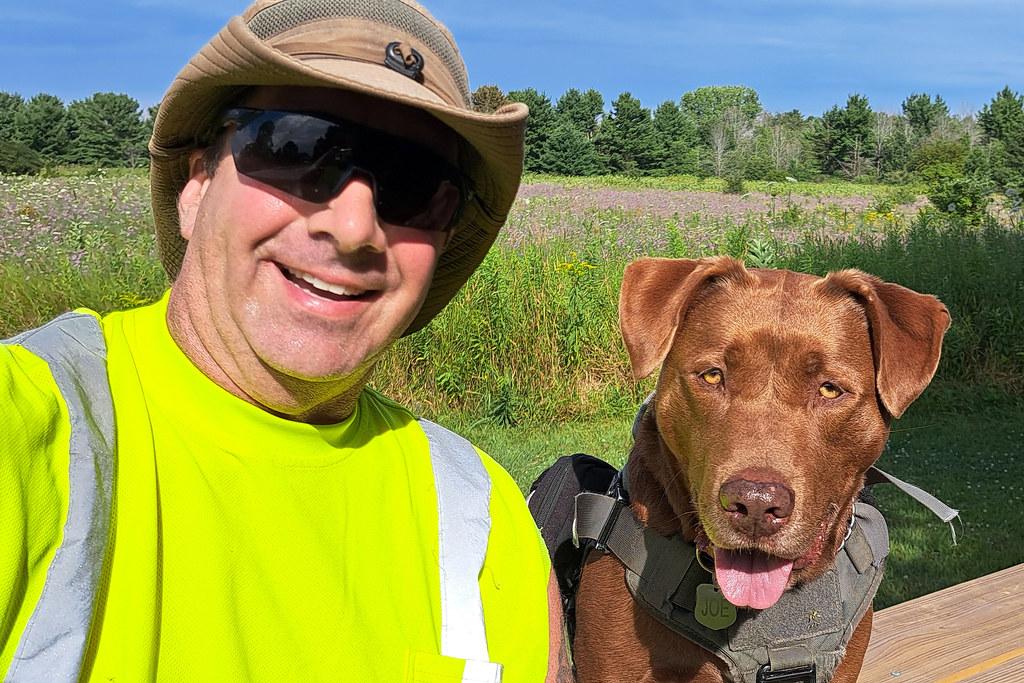Embarking on a hiking adventure with your furry companion is one of the most rewarding ways to enjoy the great outdoors. The joy of watching your dog explore new trails and terrains can bring immense happiness to both of you. However, amidst the excitement, there’s always a lingering worry about your beloved pet wandering off and getting lost. Fear not, as there are practical and effective strategies to ensure your dog stays safe and close by during your hikes. In this guide, we’ll explore essential tips and techniques to prevent your dog from getting lost, allowing you to enjoy your outdoor escapades with peace of mind. Whether you’re a seasoned hiker or new to the trails, these insights will help strengthen the bond between you and your four-legged friend while ensuring their safety on every adventure.
Choose the Right Gear for Safety and Comfort
Ensuring your furry friend is equipped with the right gear is crucial for both their safety and comfort on the trails. Start with a well-fitted harness that provides better control without putting strain on their neck. Opt for a brightly colored or reflective harness to increase visibility. Pair it with a sturdy leash that offers a secure grip and enough length to allow some freedom while keeping your dog close.
- Identification: Always ensure your dog has a collar with an ID tag containing your contact information. Consider a GPS tracker for added peace of mind.
- Boots: Protect their paws from rough terrain, sharp objects, or extreme temperatures with a pair of durable dog boots.
- Backpack: If your dog is comfortable carrying some weight, a dog backpack can hold essentials like water, treats, and waste bags.
Remember, comfort is key. Choose materials that won’t chafe or irritate their skin, and always double-check that everything fits properly before setting out on your adventure.

Train Your Dog with Reliable Recall Commands
Developing a strong recall command is essential for keeping your furry friend safe on the trails. Start by choosing a word or phrase that you’ll consistently use, like “come” or “here.” Make it exciting and rewarding for your dog to respond. Use high-value treats that your dog adores, reserving them solely for recall training to make the command special. Begin training in a controlled environment like your backyard, gradually increasing distractions as your dog improves.
- Practice regularly: Consistency is key. Incorporate recall exercises into your daily routine.
- Keep it positive: Always use an enthusiastic tone and reward your dog when they respond correctly.
- Avoid negative associations: Never call your dog to punish them. This will only make them hesitant to come back.
- Vary the environment: Once your dog has mastered recall in a familiar setting, introduce new locations to ensure they respond in different situations.
By investing time in teaching reliable recall commands, you’re not just preventing your dog from getting lost; you’re also strengthening your bond and building trust. Remember, patience and positivity are your best tools in this journey.
Plan Your Hiking Route with Dog-Friendly Trails
Embarking on a hiking adventure with your furry friend is an excellent way to bond and explore nature together. Ensuring your canine companion stays safe involves planning routes that cater to their needs. Here are some tips for selecting paths that are both scenic and dog-friendly:
- Research Trail Rules: Some trails have specific regulations regarding dogs, such as leash requirements or restricted areas. Make sure to check these rules in advance to avoid any surprises.
- Check for Amenities: Look for trails with amenities like water stations, shade, and rest areas, which can make the hike more comfortable for both you and your dog.
- Consider Trail Difficulty: Choose trails that match your dog’s fitness level. While a steep incline might be thrilling for you, it could be exhausting for your pet.
- Local Wildlife Awareness: Select routes where local wildlife is less likely to pose a threat. Being aware of your surroundings can prevent unexpected encounters that might lead to your dog wandering off.
By selecting the right trail, you create a safe and enjoyable experience for both you and your dog, minimizing the risk of separation during your outdoor excursions.
Utilize GPS Trackers and Identification Tags
In the great outdoors, keeping track of your furry companion is paramount. GPS trackers have revolutionized pet safety, offering peace of mind as you traverse winding trails. These devices are often lightweight and attach easily to your dog’s collar, providing real-time location updates through a smartphone app. With features like geo-fencing, you can set virtual boundaries and receive alerts if your adventurous pup strays beyond them.
Equally important are identification tags. Ensure your dog’s collar is equipped with a durable tag displaying essential information. Here are some tips for creating effective ID tags:
- Include your phone number and a secondary contact number.
- Consider adding a note if your dog has special needs or allergies.
- Opt for tags made from robust materials like stainless steel to withstand the elements.
By combining modern technology with traditional methods, you significantly increase the chances of a swift reunion should your dog wander off during your hiking adventures.

